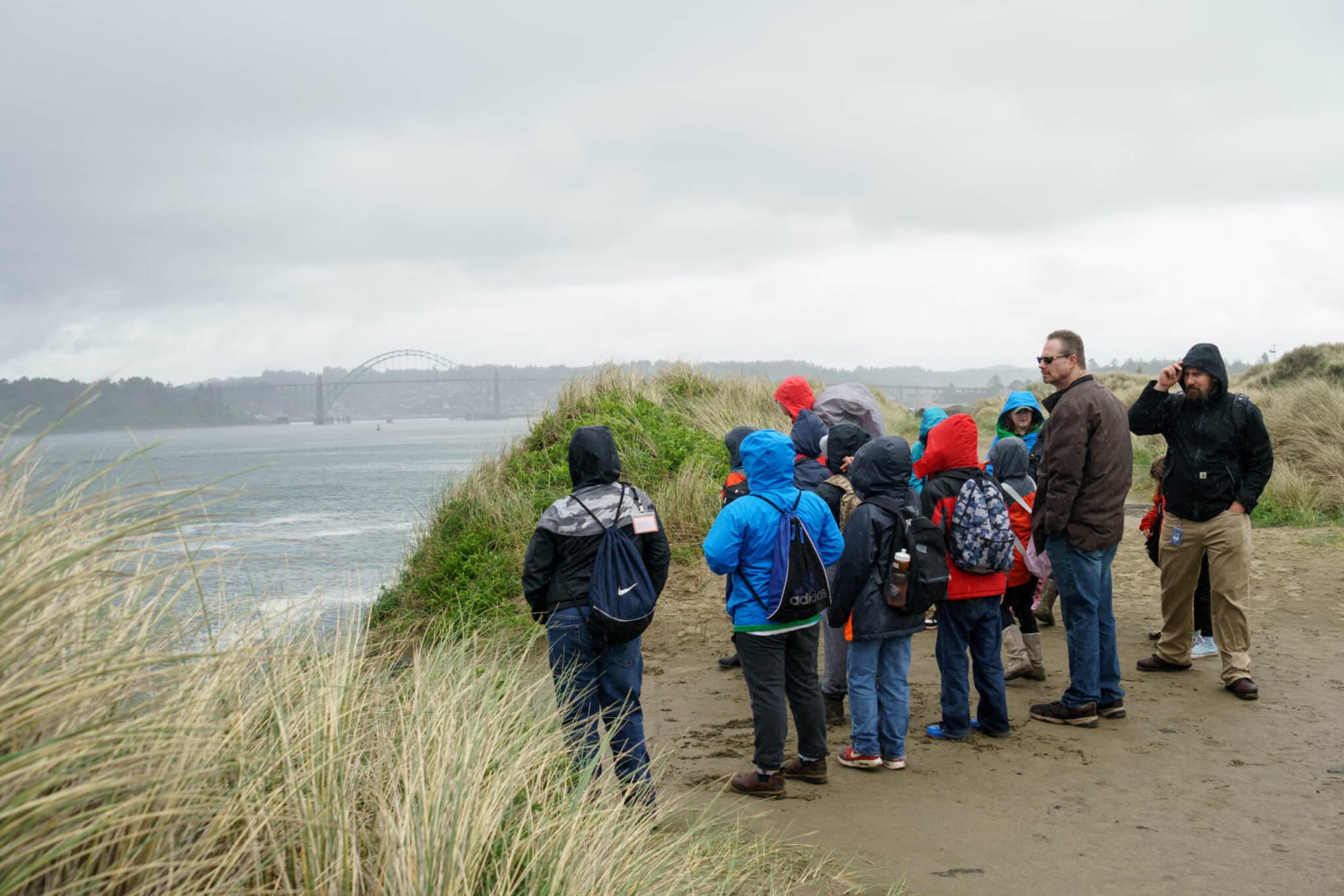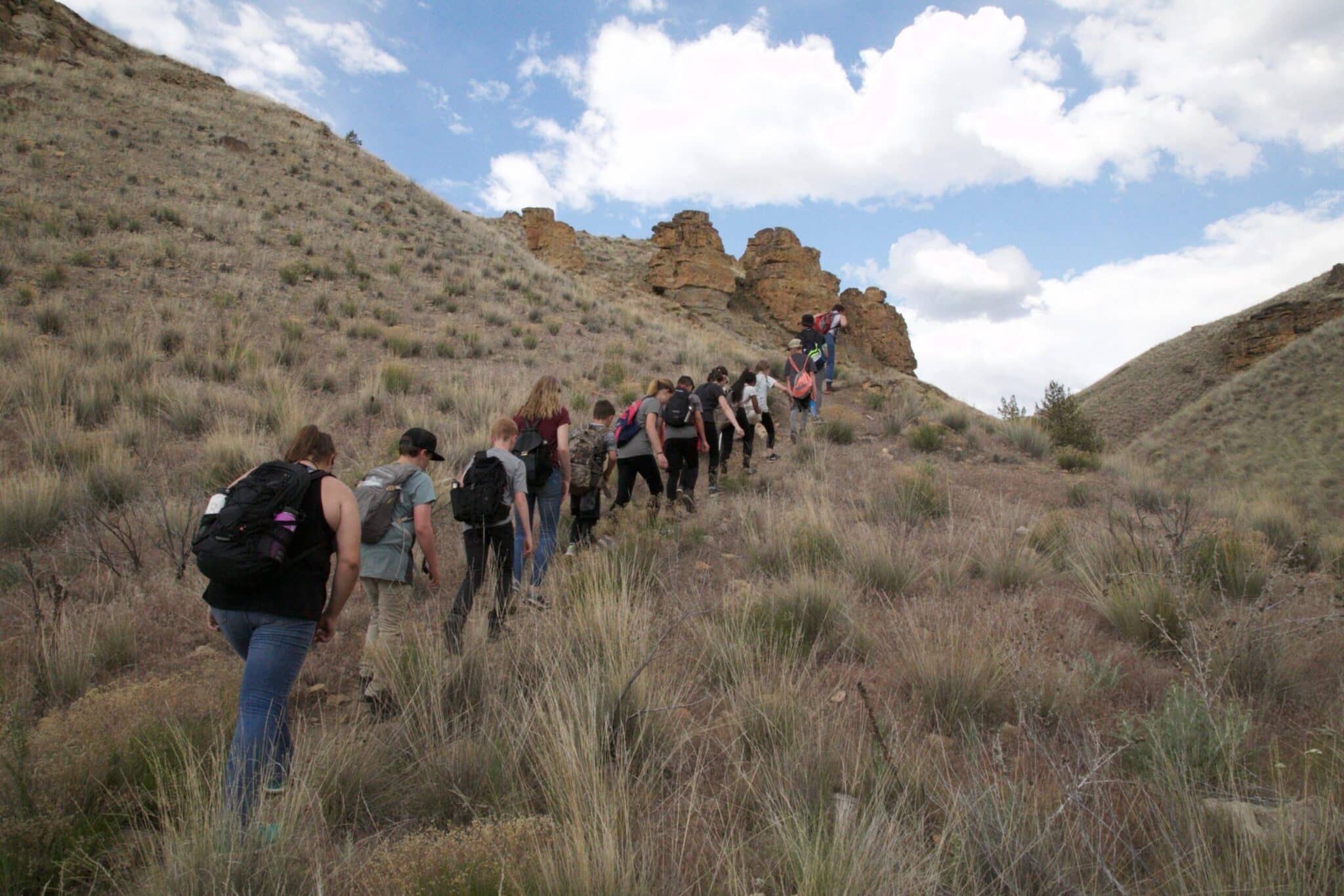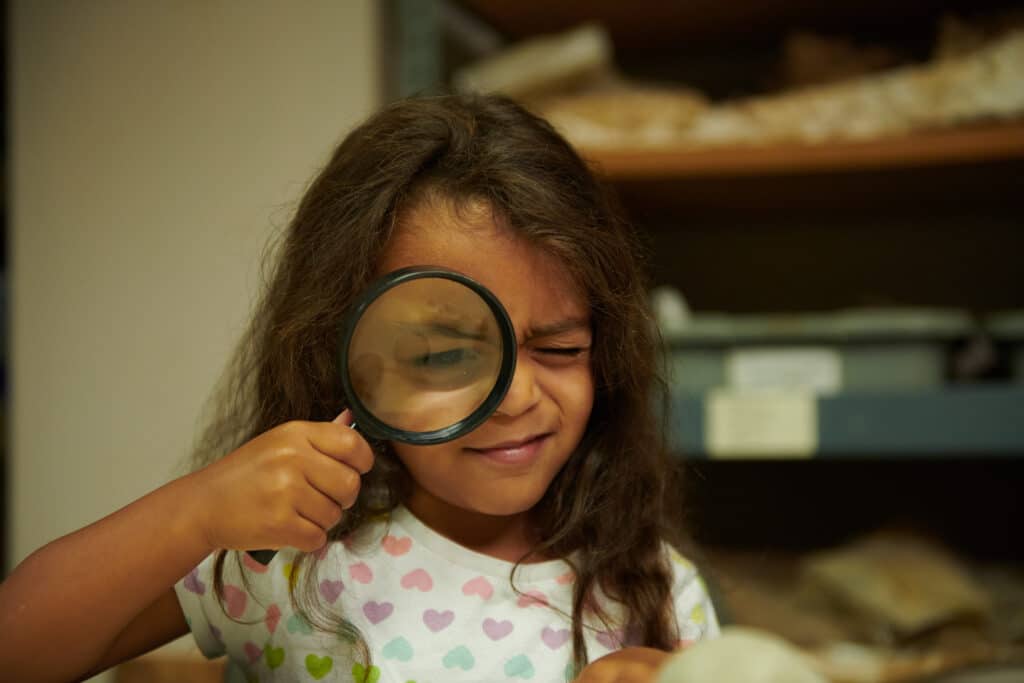Camp Gray and Camp Hancock
Spring Registration is now open!
OMSI Outdoor School is the perfect opportunity to get your class out in nature in-line with current science standards. Our full-service program is specifically designed for students in grades 4 through 8, but participants of all grade levels are welcome.
Program Highlights
All-inclusive outdoor school
NGSS Standards Aligned
Small Group Instruction
Rustic and Well-Equipped
Delicious Home-Cooked Meals
20+ Unique Programs to Pick From
Locations
OMSI offers two distinct locations for Outdoor School in Oregon—Camp Gray at the Coast and Camp Hancock in the desert.

Camp Gray
The Coastal Discovery Center at Camp Gray, located in the inspiring science hub of Newport, Oregon, is the home of our longstanding coastal education programs. Nestled between the expansive dunes of South Beach and Yaquina Bay, there are numerous opportunities to explore the wide range of ecosystems on the Oregon Coast. On a walk straight from the cabin door to the beach, students can investigate the connections between ocean currents, geology, and ecological adaptation to better understand the web of life that depends on our one worldwide ocean.

Camp Hancock
Hancock Field Station, uniquely situated within the Clarno Unit of the John Day Fossil Beds National Monument in north-central Oregon, has access to one of the world’s most significant fossil sites, nearby canyons, archaeology sites, and the John Day River. In the nearby sedimentary rock formations, the fossil record unlocks the geological history and evolution of life and climate in Oregon. Juniper-sage grasslands provide excellent locations to study arid lands ecology. Clear night skies in late fall and early spring provide the opportunity for astronomy programming.
Spring 2026 Program Pricing
2-Day Program $5,000 16 Participants 1:7 ratio | 3-Day Program $7,000 16 Participants 1:7 ratio | 4-Day Program $8,000 16 Participants 1:7 ratio | 5-Day Program $10,000 16 Participants 1:7 ratio |
The chart above combines students and adults in total headcount. Beginning Spring 2026, OMSI has adopted a per-program pricing structure. The costs associated with our full-service Outdoor School remain the same based on headcount provided at registration. Camp Gray can accommodate 96 participants. Hancock Field Station can accommodate 80 participants. Schools that are not eligible for state Outdoor School may contact register@omsi.edu to negotiate a reduced cost.
Outdoor School for All
Our Philosophy
We believe everyone deserves the chance to be outdoors and learn new things in an inclusive way. OMSI Outdoors is committed working internally and with external partners make the changes needed to our site and program outdoor school is for everyone.
Financial Access
OMSI is committed to making science-fueled fun available for all in our community. Please explore the link below to Oregon State University Extension Outdoor Service School program for information about accessing state funding for outdoor school. Inquire about our financial assistance programs for school and community programs.
Camp Accessibility
Our goal is to provide a safe and inclusive program for everyone. Support can range from adaptive gear such as an all-terrain or beach access wheelchairs or personnel such as an ASL translator. We work with school districts and the OSU Extension Service Outdoor School Program to support full participation in our programs. 1:1 student professional aides are not charged in addition to the student price.
Need Help Planning?
We know what it takes to coordinate groups of students—we’ve been doing it for years! Contact us at register@omsi.edu to find answers and resources for painless planning.
